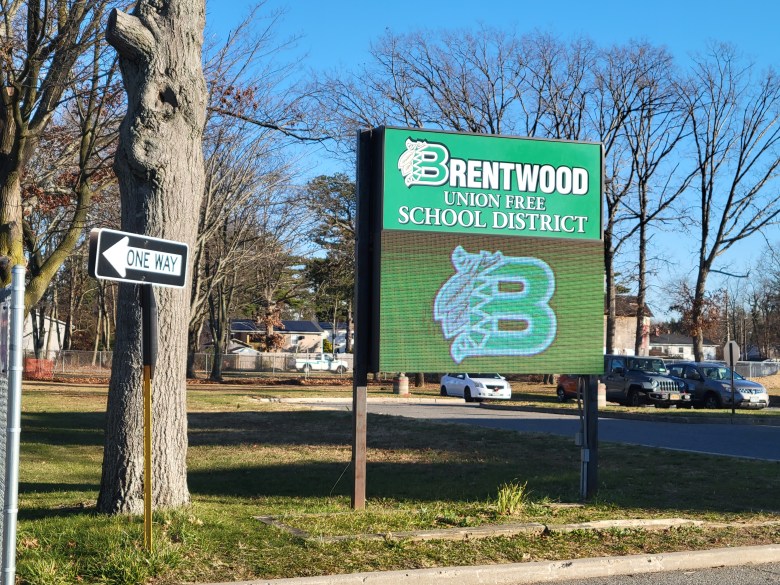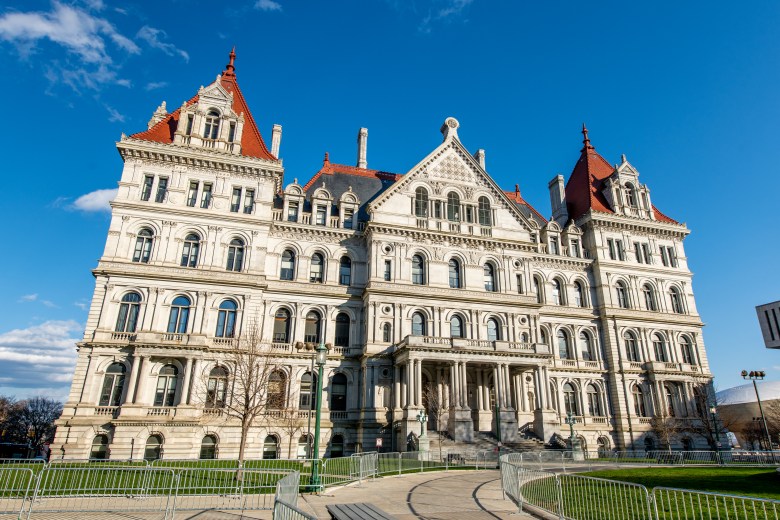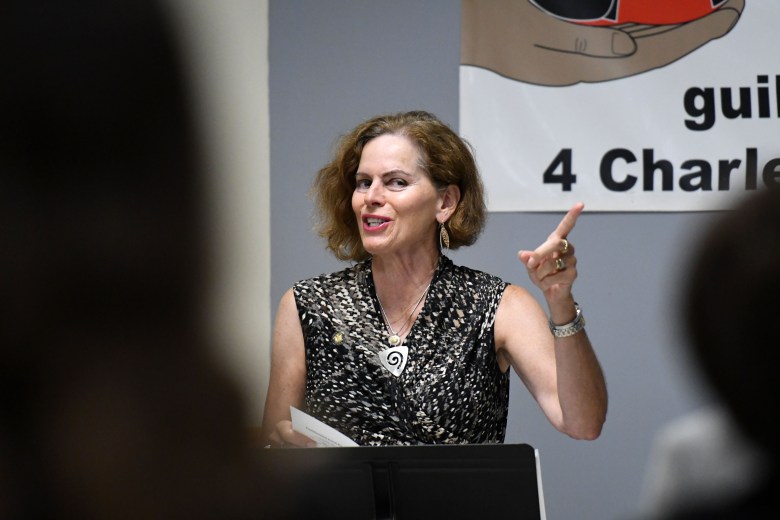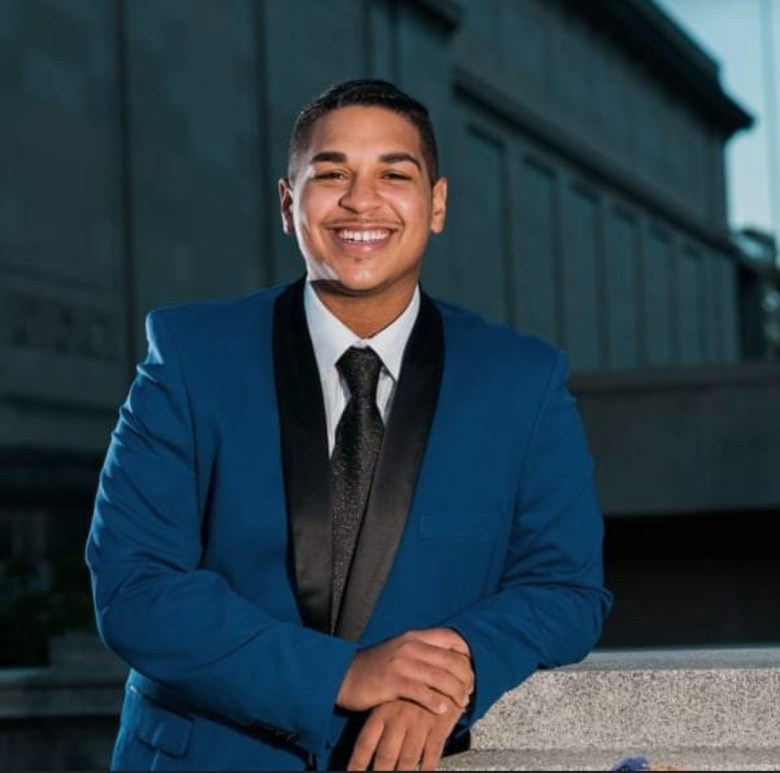BRENTWOOD, N.Y. — Steven Martinez’s life was turned upside down by an ill-conceived joke. He was a sophomore at Long Island’s Brentwood High School, a few days before Thanksgiving in 2019, when he made a post on Snapchat late one night about hiding an AK-47 at Area 51 in Nevada.

The police arrived around 2 a.m. looking for him. Martinez spent the morning at the station being questioned, he recalled. He was then handcuffed and taken to a hospital for a psychiatric evaluation.
Doctors determined he wasn’t a threat. The police didn’t press charges.
Yet the Brentwood Union Free School District suspended Martinez for more than six months. He wouldn’t be allowed back until the next school year. In the meantime, he’d get a few hours of tutoring a week.

New York state allows students to be suspended for up to 180 days — an entire school year. As a result, thousands of students across the state have been kept out of school for a month or more, cut off from their peers and receiving just an hour or two of instruction per day. The New York State Education Department does not collect data on suspension lengths, but public records requests to 17 of the state’s largest school districts uncovered more than 6,200 suspensions of more than 20 days from 2017-18 to 2021-22. (These numbers don’t include New York City, which prohibited most long-term suspensions in 2019.)
A bill recently introduced for the fifth consecutive state legislative session would ban suspensions of more than 20 school days under most circumstances. At least 15 states already have similar laws in place. A recent report from a State Education Department task force recommends such a limit in all but the rarest of circumstances. New York’s proposed legislation, called the Solutions not Suspensions bill, is co-sponsored by more than a third of state senators and has been co-sponsored by nearly half the members of the state assembly. Yet the legislation has never made it out of committee.
“A suspension doesn’t mean you’re a troublemaker. You could have learned your lesson.”
Steven Martinez, a Brentwood, NY, student who was suspended for more than half a school year
New York educators, concerned about school safety and wary of being restricted by legislators, have pushed back on the idea of a cap. With misbehavior surging in the aftermath of pandemic lockdowns, district leaders say there are times when removal from school for more than a month is warranted, particularly when a student’s behavior harms or interferes with other students.
Advocates pushing for the bill argue that keeping students out of school for more than 20 days does not address any of the underlying issues that led to the suspensions but creates new ones by fomenting disengagement and forcing students to fall significantly behind in class.
“New York state has an obligation for every child. It does not say in our state constitution, ‘every child except for those who may have been seen as disruptive to others,’ ” said Jamaica Miles, a Schenectady City school board member and co-founder of the community organizing group All Of Us. “Since the inception of this country, the model of removing someone from society to teach them a lesson has not worked.”
Related: When your disability gets you sent home from school
In 2021-22 alone, the 17 school districts that provided data issued more than 1,600 long-term suspensions, an average of nine per school day. From 2017-18 to 2021-22, districts with more economically disadvantaged students and Black and Latino students gave out more such suspensions per capita than their more affluent, whiter counterparts.
Buffalo Public Schools assigned more than 2,200 long-term suspensions over those five years, the highest of any district that provided data. Rochester City School District recorded the second most, with 854. City School District of Albany meted out 280. In Brentwood, Steven Martinez’s district, where nearly 90 percent of the 18,000 students are Hispanic and a similar proportion are economically disadvantaged, the district reported 466 long-term suspensions over the five years.
Brentwood and Rochester officials did not respond to requests for comment, but district officials elsewhere in the state stressed that they have been working to address student behavior and reduce suspensions. In Albany, for instance, administrators said that they have focused on putting a variety of strategies in place, such as training teachers on trauma-informed care and de-escalation and putting counselors, nurses and psychologists in each school building.
“Our mission is really to educate our kiddos, and in order to do that we need them in school,” said Lori McKenna, Albany’s assistant superintendent for secondary instruction. “Our first go-to is not suspension. However, when we have pretty severe incidents that are happening, there may be a need for extended periods of suspension.”

Indeed, several district officials said that they reserve long-term suspensions for only the most serious violations that disrupt the school day and threaten safety. Among the 14 school districts that provided information on specific violations, a significant amount were for such issues, including fighting and bringing a weapon to campus. (In the proposed legislation, suspensions that exceed 20 days would still be permitted under federal law for certain offenses, such as possessing a firearm on school grounds.)
“It’s usually those cases where it really resulted in bodily harm or a threat of a really serious nature,” said Sharon Brown, chief of student support services for Buffalo Public Schools. “There are many times when we have to look at the safety and welfare of all the students.”
But advocates and lawyers say that even for severe offenses, a month out of school should be enough time to address the behavior. And they point out that there may sometimes be a mismatch between how a school district records an incident and a student’s actual behavior.
In Martinez’s case, for instance, Brentwood administrators wrote in the official record that he was suspended because he “threatened to shoot up the school with an AK47 on Snapchat” — something his post, a copy of which was reviewed by The Hechinger Report, did not say.
In 2021-22 alone, the 17 school districts that provided data issued more than 1,600 long-term suspensions, an average of nine per school day.
Complicating the issue is the fact that misbehavior in school is on the rise across the country as students continue to struggle with readjusting to in-person classes. A third of school leaders reported an increase in fights among students, and 56 percent said there had been an uptick in classroom disruptions that they attributed to Covid disruptions, according to a federal survey released in May 2022. Suspensions have long been considered an important tool for dealing with misbehavior, and most teachers support their use; a 2019 survey found that 43 percent of teachers thought out-of-school suspensions were used too little, with just 9 percent saying they were used too much.
New York state’s teachers and administrators unions, as well as its school boards association, all raised concerns about the Solutions not Suspensions legislation, which would mandate several other discipline reforms in addition to the suspension cap.
“Where you have the well-intentioned decision of legislators imposing their view upon trained professionals and thereby impairing their exercise of professional judgment that, I think, is the basis of our hesitation,” said Kevin Casey, executive director of the School Administrators Association of New York State. “This defies a one-size-fits-all solution, in my mind.”
State records show that all three groups have lobbied on the bill (in reporting their activities to the state, lobbyists are not required to specify a position). New York State United Teachers and the New York State School Boards Association provided statements to The Hechinger Report that did not address the question of suspension length but invoked the need for consideration of school safety.
Related: How the pandemic has altered school discipline — perhaps forever
Safety is also a concern for legislators. Assemblymember Patricia Fahy, who represents Albany and surrounding towns, is a co-sponsor of the Solutions not Suspensions bill, but says she doesn’t endorse all of it.
“I’m on the bill because I support the intent, but we probably have to have a little bit of flexibility built in because we can’t predict every situation,” she said. “Parents, children, teachers — everyone needs to have that fundamental feeling of safety. You can’t learn if you’re not feeling safe or nurtured.”

Proponents of the legislation question whether removing students from their classes for months makes schools any safer in the long term, while pointing to the damage that can be done to individual students.
“The idea that a student can be out for 30 or 60 days and still receive the academic instruction for them to receive a quality education, I think some people are fooling themselves,” Schenectady’s Miles said. “We are punishing them without giving them the support to learn.”
Prior to his suspension, Martinez enjoyed school. He liked getting to see friends every day. He had a passion for drawing that made art class his favorite, followed by math and history. As a history buff, he liked sharing what he already knew from videos he had watched on his own.
And then, just like that, he was cut off. A tutor began coming to his home for a few hours a week, but Martinez says he learned very little. At the end of the school year, he was informed that he was on track to fail the semester because he hadn’t handed in work that he was unaware was owed.
“It really hurt,” he said. “How do you expect me to do well in school? It just tortures a person’s mind.”
Martinez scrambled to finish the missing assignments and ended up barely avoiding failing.
Related: When typical middle school antics mean suspensions, handcuffs or jail
The educational options available to suspended students often pale in comparison to what they would get in the classroom. The state requires that alternative instruction must be “substantially equivalent” to what the student would get in a regular classroom. Yet suspended elementary school students typically get one hour per day of academics and suspended middle and high school students get two, compared to five and five and a half hours, respectively, for students in school. Depending on the district, suspended students can be taught through remote instruction or in person at an alternative school, a tutoring center or their home.
“All I knew was people were giving up on me, and they didn’t want me in class.”
Isaiah Santiago, who was often suspended from his Rochester, NY, middle school
Despite the legal requirements, some students get no instruction, advocates and lawyers said. And even if a district meets the number of mandatory hours, many students still fall behind, as Martinez did. “The only way you could get the same level of instruction would be an alternative school that was as vast and resourced as your original school,” said Eamonn Scanlon, education policy director of the nonprofit advocacy group The Children’s Agenda. “That’s not what happens.”
One study found that New York City students suspended for more than 20 days (prior to the district putting its cap in place) faced significant long-term consequences. These students were less likely than those who had received shorter suspensions to earn credit in math and English classes in succeeding years and were the least likely to graduate.
The same study, however, didn’t find any positive effects on attendance rates or test scores for the suspended students’ peers. Nor was there any evidence that school climate was improved by long-term suspensions, as measured by teacher and student surveys.
And the consequences of long-term suspensions can extend beyond the academic and beyond the student. When younger kids are kept home for weeks on end, parents might have to face the choice of losing their job or leaving their child alone for hours each day.

Isaiah Santiago was suspended so often from his Rochester middle school, typically for not following directions, that he got kicked out of his regular classes for an entire marking period. Santiago says he is not sure how the punishment was recorded in his file, but described a program that functioned largely as a long-term suspension. He and other students spent a couple of hours every morning in the in-school suspension room, occasionally muddling through work on their own, but often not doing anything at all.
“All I knew was people were giving up on me, and they didn’t want me in class,” he said.
Related: When the punishment is the same as the crime: Suspended for missing class
Santiago and the other students would be let out around 11 a.m. with a bus pass to get home. Sometimes they’d take the bus. But sometimes they’d hang out in a park at the back of the school or play basketball. And sometimes some students would do drugs. “It was just a lot of getting into the wrong things,” Santiago said, adding that a couple of those peers are now gang members or drug dealers. Another was killed last year by gun violence.
His mother worked during the day, but after a few weeks, Santiago’s godmother stepped in and began picking him up at school. He began helping her with some construction work at a church in the afternoons. “That’s part of the reason why I think I’m on this end, where my friends who also went through it are on the other end,” he said. Now 18, he’s a freshman at St. John Fisher University and running for Rochester school board.
Unlike Santiago, Martinez was mostly alone during his suspension. He had no way of talking to his friends during school hours. His main social contacts during the week became the people around the globe he would talk to while gaming and the therapist he began seeing, set up with the help of a nonprofit.
He doesn’t recall much communication from the school after being told he wouldn’t be allowed back for the remainder of the year. Halfway through Martinez’s suspension, in March 2020, Brentwood, like all school districts in the nation, went virtual because of the pandemic. He still wasn’t allowed to rejoin his classes, even though they were online.
“I felt so isolated,” Martinez said. “It really broke me.”
Related: Some kids have returned to in-person learning only to be kicked right back out
The New York State Education Department task force recommendations on discipline call for school districts to work with families during a long-term suspension to “establish conditions to repair the harm and ensure the safe return of the student to the school community.”
This is rarely done, advocates and lawyers across the state say. School districts fail to use the time to work with suspended students on the behavior that led to suspension or help them grapple with the anxiety that might come about facing their peers and teachers after being kicked out. And, they say, 20 days should be long enough to address any underlying issues.
“A 20-day suspension is a month,” said state senator Robert Jackson, the current sponsor of the Solutions not Suspensions legislation. And, he added, keeping students out of school for longer doesn’t necessarily mean the original problems will be addressed.
“New York state has an obligation for every child. It does not say in our state constitution, ‘every child except for those who may have been seen as disruptive to others.’ ”
Jamaica Miles, Schenectady City school board member
Jackson would like to see the bill move forward this year, after eight years of stagnation, but acknowledged that the legislature is facing a busy session, including sorting out a $2.7 billion funding increase for schools. He hopes some of that money will go to beefing up support teams in schools that could help prevent behavior problems in the first place.
Martinez has spoken out in favor of the Solutions not Suspensions legislation, including at a 2022 Capitol rally, hoping to prevent other students from dealing with long-term suspensions. When he was finally able to rejoin his peers in the fall of 2020, as a junior, he immediately realized how far behind he’d fallen. He spent the semester teaching himself the things that he’d missed. By his senior year, Martinez was back on track in his classes and looking toward college.
But he worried that his sophomore grades would hurt his chances of being accepted somewhere. And then there was the question on his applications: “Have you ever been suspended?”
The thought of having to share details of his experience with college administrators was enough to make Martinez shut down. Employees of Make the Road New York, a nonprofit that had been helping him, had to step in and craft an answer. He was eventually accepted to Farmingdale State College, but not before a lot of anxiety about being turned away for being a “troublemaker.”
“A suspension doesn’t mean you’re a troublemaker,” Martinez said. “You could have learned your lesson.”
But, he clarified, the punishment didn’t teach him anything: “By suspending someone, they don’t learn. I had to learn my own way.”
This story about long-term suspensions was produced by The Hechinger Report, a nonprofit, independent news organization focused on inequality and innovation in education. Sign up for the Hechinger newsletter.




Thank you for your analysis of suspension practices in NY schools. But why no mention of so-called zero tolerance policies, which have been prominently touted in the past by school boards and others? Zero tolerance equates with zero discernment, in my view.